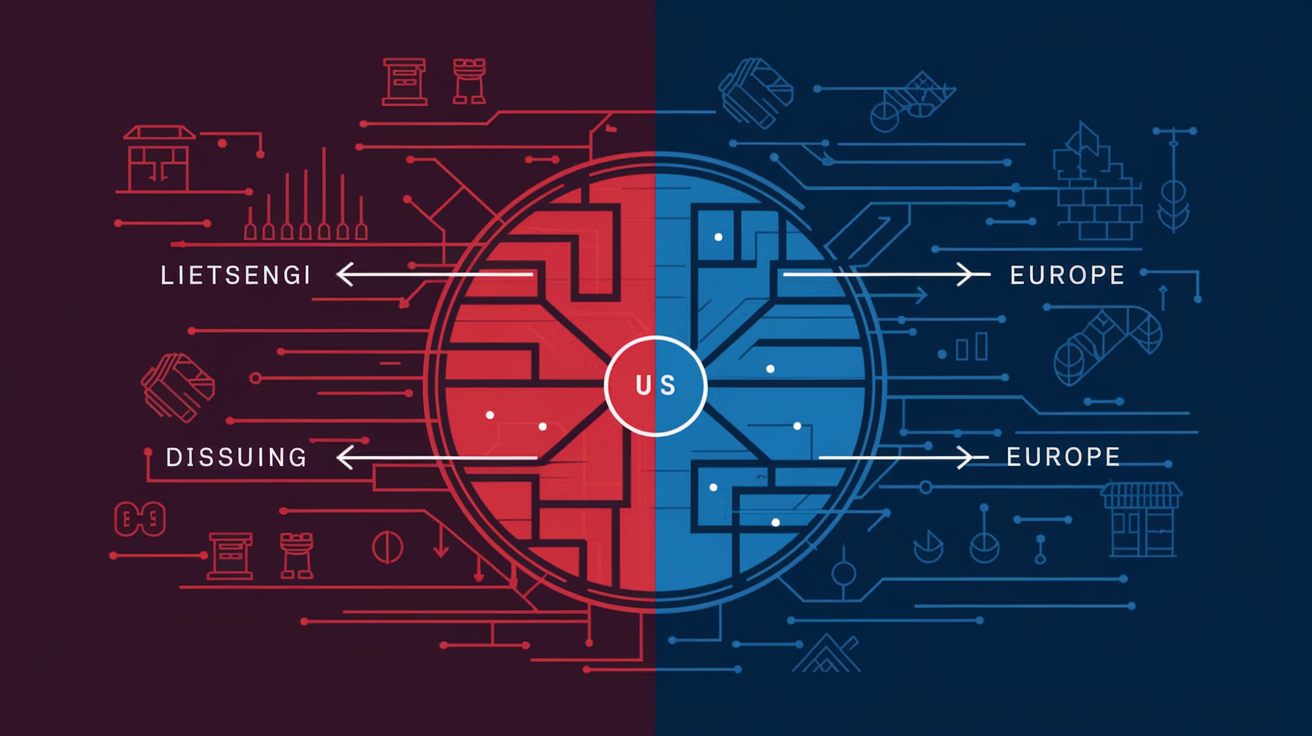Consumer confidence is a crucial indicator of the economic health of a country. While the United States faces challenges such as declining retail sales and uncertainty in trade policies, Europe displays a more stable economic climate. This article highlights current economic indicators and the influence of political factors on consumer confidence in both regions, providing investors and financiers with a clear picture of the current situation.
Consumer Confidence: A Comparison of Economic Indicators in the United States and Europe

Today’s analysis of consumer confidence presents a complex picture that illuminates both the economic situation in the United States and in Europe. In the United States, there is a notable decline in confidence, caused by a complex combination of internal and external factors. The University of Michigan index, a key indicator of consumer confidence, fell to 64.7 points in February 2025, reaching its lowest level since November 2023. This decline reflects growing consumer concerns about future price increases and economic uncertainties. A key factor is the persistent trade policy, which fosters uncertainty also due to rising tariffs.
American consumers’ inflation expectations have significantly increased, with forecasts of 4.3% for the coming year and 3.5% for a five-year horizon. These expectations reflect concerns about potential price increases directly related to trade policy. As for consumer spending, the United States recorded a decrease of 0.2% in January, and even 0.5% when accounting for inflation. The rapid decline in consumer spending, despite a noticeable income increase of 0.9%, highlights consumer hesitancy in an uncertain political environment.
In Europe, however, different developments are emerging. Although specific comparative data is currently lacking, the eurozone’s economic landscape is characterized by a stable labor market and relatively stable political conditions. Inflation stands at 5.5% and shows a slow descending trend. This suggests that the impact of trade relations on consumer confidence is less dramatic. While political uncertainties influence confidence in Europe, factors such as labor market conditions and overall economic stability dominate.
In summary, the comparison shows that American consumer confidence is strongly influenced by external political uncertainties, thereby slowing growth. European consumers, on the other hand, experience relative stability, albeit overshadowed by high inflation rates, but not equally affected by trade relations. In both regions, confidence remains a sensitive indicator of economic health, with regionally diverse challenges and reactions.
Political Turbulence and Its Impact on Consumer Confidence in the United States and Europe

Consumer confidence is strongly influenced by political conditions and decisions, with an impact that varies between the United States and Europe. In the United States, protectionist measures and political uncertainties dominate the scenario. Increases in tariffs, particularly from the Trump era, illustrate the uncertainties that can arise from unpredictable trade policies. These tariffs have not only affected import costs but have also undermined market stability, thereby compromising consumer confidence.
The attempt to stimulate the economy through an expansionary fiscal policy brings with it risks. The continuous increase in public debt may threaten the long-term economic health of the country, generating concerns among citizens. These fiscal risks are often amplified by the constant political uncertainty. A government whose decisions are provocative and often conflict with stabilizing economic policies creates lasting volatility.
In Europe, the motto is stability. Although geopolitical tensions, such as the conflict in Ukraine, create unease, consumer confidence is supported by growing economic unity and cross-border cooperation within the European Union. Efforts to maintain budget discipline, although occasional plans for increased defense spending might incur new debt, show a controlled approach, favored by a stable political environment.
Comparing these dynamics, Europe currently appears to be what the United States aspires to be: political predictability and economic integration. European investors are facing a more stable interest rate environment, positively affecting the investment climate. Meanwhile, political volatility in the United States is leading capital flows towards Europe, decreasing the attractiveness of the United States for investors.
In summary, it is evident how political influence shapes consumer confidence differently in these two major economic areas. While the United States is dominated by protectionist measures and political uncertainties, in Europe, geopolitical tensions navigate in a sea of economic integration.